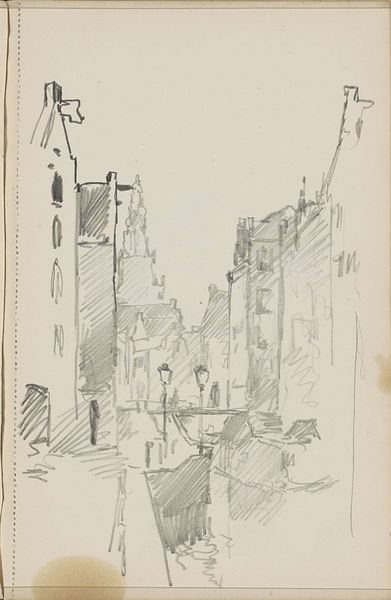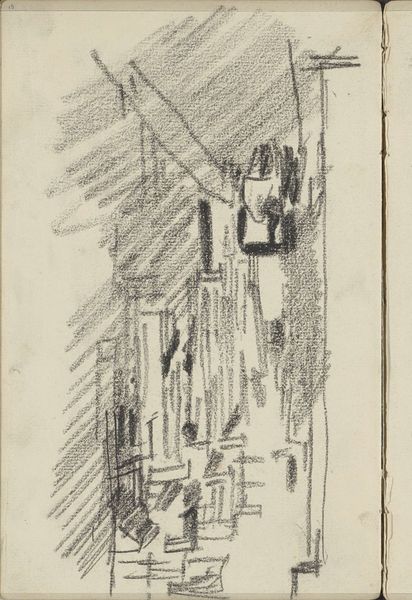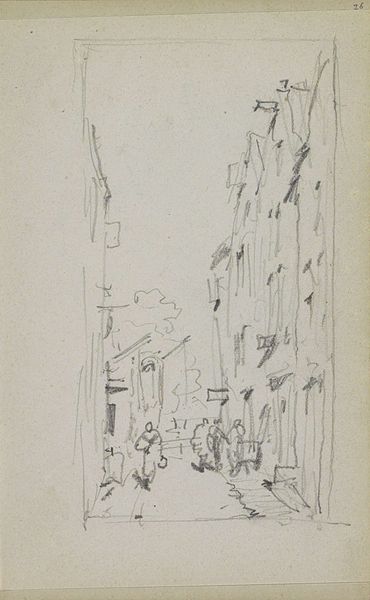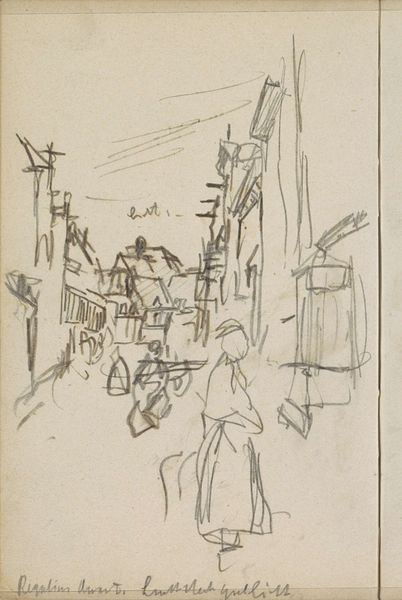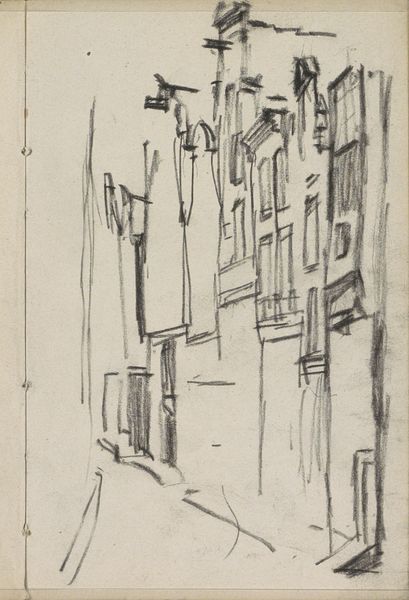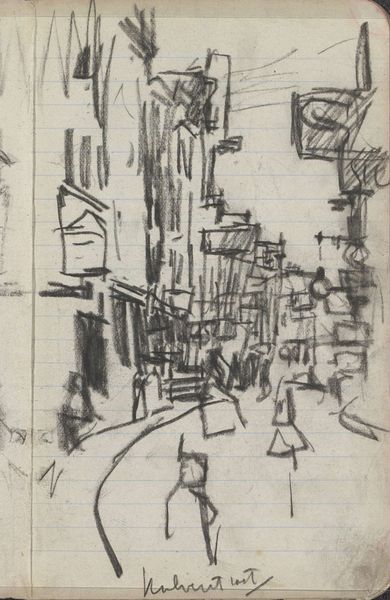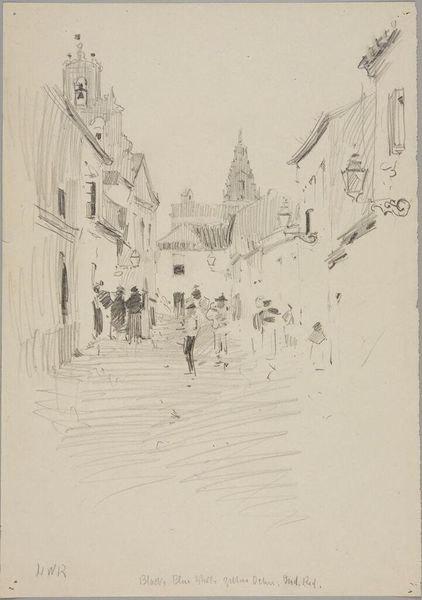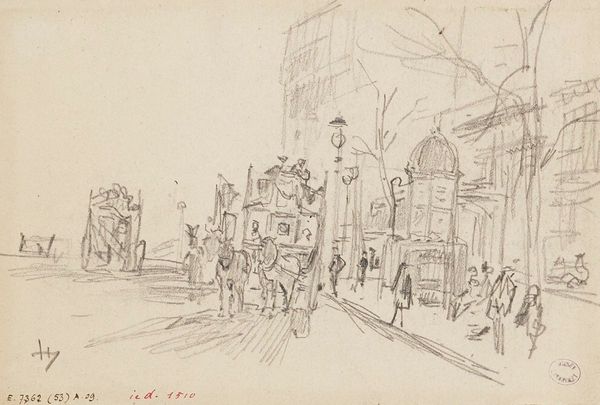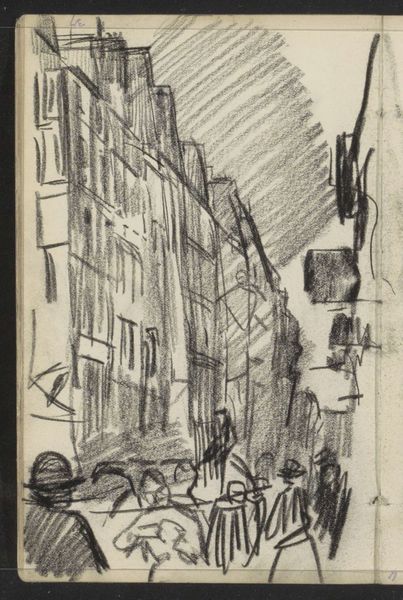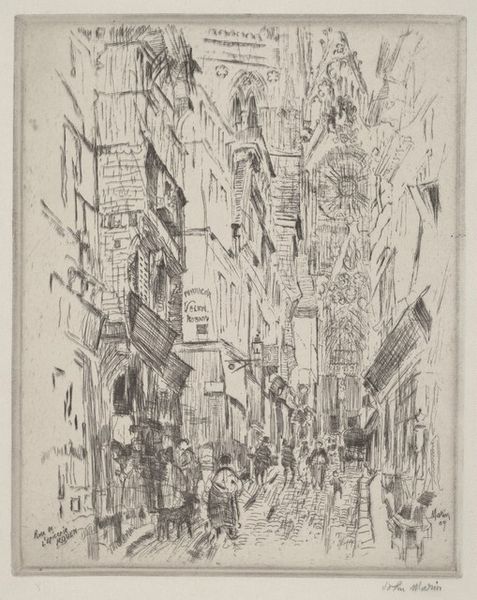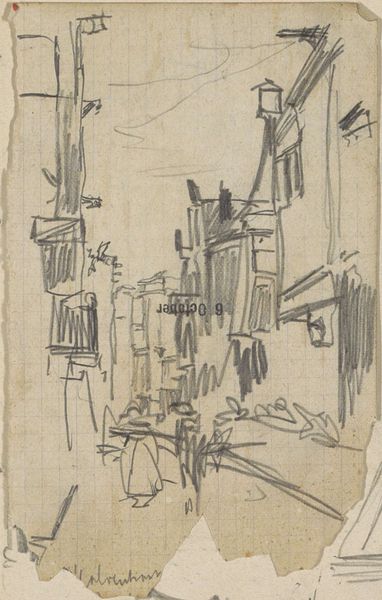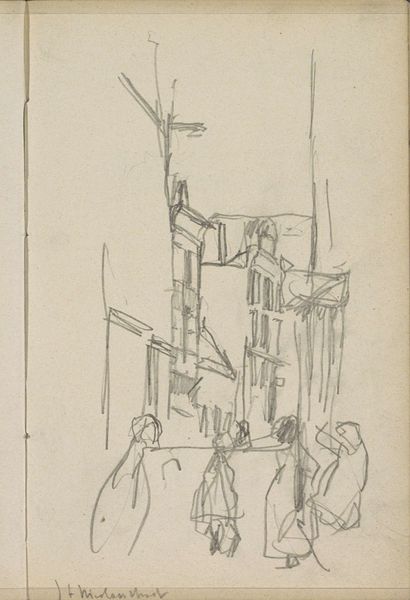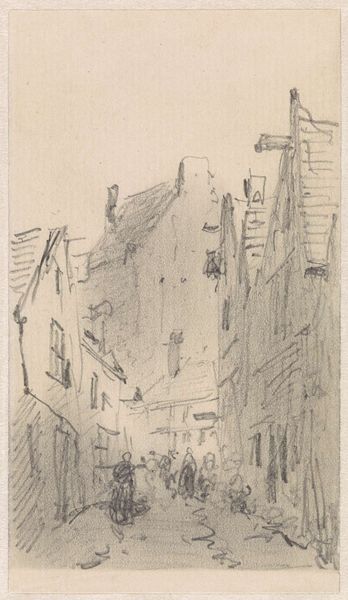
Copyright: Rijks Museum: Open Domain
Editor: This pencil drawing, "Gezicht op de Heiligeweg te Amsterdam" by George Hendrik Breitner, dates back to around 1893 and captures a bustling Amsterdam street. I'm struck by the energy it conveys, despite being a seemingly quick sketch. How would you interpret this work? Curator: Breitner, known for capturing the spirit of everyday life in Amsterdam, presents us here not just with a street scene but with a social document. It's important to understand the historical context: Amsterdam in the late 19th century was a city undergoing rapid industrialization and social change. How does this sketch reflect that transformation? Editor: I guess you can see that in the figures hurrying along the street; they don’t seem to be posing, but actually caught in a real-life situation. But it is a simple pencil sketch, why not a photograph? Curator: Exactly! While photography was emerging, sketches like these offered something different: a subjective impression, an artist's interpretation of the changing urban landscape. Breitner chose to focus on the dynamism, the transient nature of modern life, didn't he? He shows the city, but perhaps also his view of social mobility? Consider how institutions like art academies shaped the appreciation and understanding of cityscapes, and in turn shaped artists' approach. Editor: So, this isn’t just a drawing of a street; it’s about capturing a specific moment in Amsterdam's social and cultural development? Curator: Precisely. It reflects how art engaged with, and helped shape perceptions of, urban modernity. By focusing on a seemingly ordinary scene, Breitner elevates it to a commentary on his time. The fact that it’s a drawing also impacts how we look at the piece. We, and he, have made a conscious decision to see beauty in a fleeting sketch rather than a staged formal depiction. Editor: I see. It makes me think about how our current snapshot aesthetic has origins that go back much further than phone cameras! Curator: Exactly. Art doesn't simply reflect society; it actively participates in constructing our understanding of it.
Comments
No comments
Be the first to comment and join the conversation on the ultimate creative platform.
